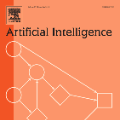The ongoing artificial intelligence (AI) revolution has the potential to change almost every line of work. As AI capabilities continue to improve in accuracy, robustness, and reach, AI may outperform and even replace human experts across many valuable tasks. Despite enormous efforts devoted to understanding AI's impact on labor and the economy and its recent success in accelerating scientific discovery and progress, we lack a systematic understanding of how advances in AI may benefit scientific research across disciplines and fields. Here we develop a measurement framework to estimate both the direct use of AI and the potential benefit of AI in scientific research by applying natural language processing techniques to 87.6 million publications and 7.1 million patents. We find that the use of AI in research appears widespread throughout the sciences, growing especially rapidly since 2015, and papers that use AI exhibit an impact premium, more likely to be highly cited both within and outside their disciplines. While almost every discipline contains some subfields that benefit substantially from AI, analyzing 4.6 million course syllabi across various educational disciplines, we find a systematic misalignment between the education of AI and its impact on research, suggesting the supply of AI talents in scientific disciplines is not commensurate with AI research demands. Lastly, examining who benefits from AI within the scientific workforce, we find that disciplines with a higher proportion of women or black scientists tend to be associated with less benefit, suggesting that AI's growing impact on research may further exacerbate existing inequalities in science. As the connection between AI and scientific research deepens, our findings may have an increasing value, with important implications for the equity and sustainability of the research enterprise.
翻译:机器智能(AI)革命的持续发展有可能改变几乎所有的职业。随着AI能力在准确性,鲁棒性和覆盖面方面的不断提高,AI可能会在很多有价值的任务上超越甚至取代人类专家。尽管我们付出了巨大的努力来理解AI对劳动力和经济的影响以及它在加速科学发现和进步方面的最近成功,我们仍然缺乏对AI如何在不同学科和领域中受益于科学研究的系统认识。在这里,我们开发了一个测量框架,通过将自然语言处理技术应用于8760万篇出版物和710万份专利,来估计AI的直接用途和其在科学研究中的潜在受益。我们发现,AI在研究中的应用似乎在各个科学领域都很普遍,在2015年以来增长特别迅猛,而使用AI的论文则表现出一个影响溢价,在其学科内外更有可能被高度引用。虽然几乎每个学科都包含一些从AI受到大量受益的子领域,但我们通过分析各种教育学科的460万个课程大纲发现,AI的教育和其对科学研究的影响之间存在着系统性的不匹配,这表明科学学科中供应的AI人才与AI研究需求不相称。最后,我们研究了谁能受益于科学工作中的AI,发现那些比例更高的女性或黑人科学家的学科往往与更少的受益相关联,这意味着AI对研究的不断增长可能进一步加剧科学中


